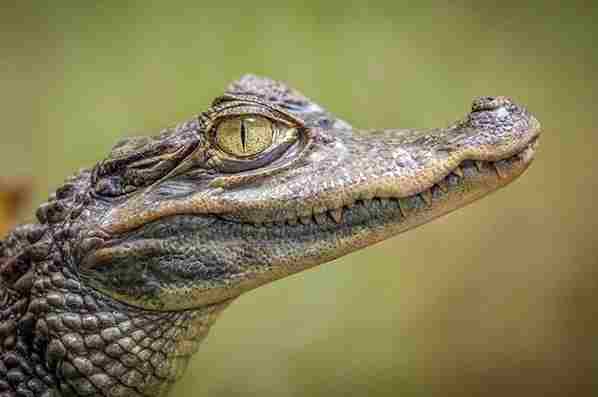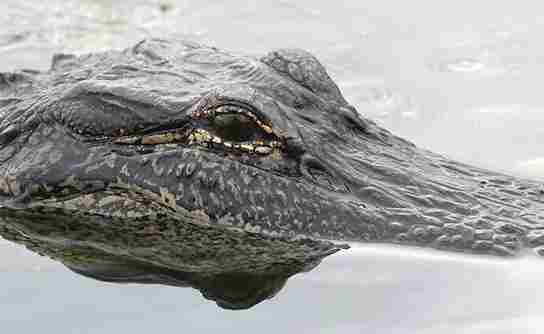Do Lizards Eat Caterpillars? (Not All Of Them!)
Lizards are one of the most reptiles on the planet, with over 6000 species. Many of us grew up watching them on walls “swallow up” different kinds of insects. If you’ve ever seen one biting a caterpillar, you may be wondering if they also have a taste for them. Lizards are generally carnivores, which means they can eat both plants and animals.
Some common foods you will find on their menu include worms, frogs, insects (usually the small ones), and fruits. Some lizards may even consume birds, depending on their size. You’re probably here to learn about interaction with caterpillars, so let’s get into it!

Do Lizards Eat Caterpillars?
Lizards do eat caterpillars, however, not all species of lizards eat the crawling larvae. A good example of a lizard that eats caterpillars is the common house lizard. Common house lizards are generally insectivores and will eat any crawling insect, including caterpillars. There are a few species of lizards that don’t eat caterpillars, such as uromastyx.
Why Do Lizards Eat Caterpillars?
All animals eat to survive. This is no different for lizards. So, any lizard that eats caterpillars does so primarily for their sustenance. However, there are certain factors that may affect a lizard’s preference for certain foods.
For instance, there are certain areas where caterpillars are usually more concentrated. Some of these are shrubs, hedgerows, flower beds, and grasses (usually long ones). Expectedly, lizards in these places are more likely to eat caterpillars.
Also, because lizards are bigger and faster, they find it easier to hunt the crawling larvae.
Finally, caterpillars serve as a good source of nutrients. Specifically, they are rich in proteins, fiber, and fats, which are all required by lizards for growth and survival.
How Do Lizards Eat Caterpillars?
The feeding behavior of lizards varies among species. While some lizards may lay in wait for prey, others are active foragers. In the case of caterpillars, most lizards typically stalk and pounce on them, immobilizing them with their tongues or jaws.
Talking about the jaw, lizards have movable jaws that allow them to catch live prey, such as caterpillars.
There are a few lizards, such as crested geckos, that don’t typically eat live food or insects. Also, the spiny-tailed lizard or uromastyx may not eat caterpillars.
Read More: Do Giraffes Make Noise?
Some Species of Lizards That Eat Caterpillars
Here are some of the lizard species known for their caterpillar consumption:
Green Anole (Anolis carolinensis)
The Green Anole, often called the Carolina Anole, is a small and agile lizard native to the southeastern United States. Being naturally insectivorous, they typically eat insects, including moths and caterpillars. They are commonly found in the woods and gardens, where you will often find lots of caterpillars.
Brown Anole (Anolis sagrei)
Similar to the Green Anole, the Brown Anole is another species known to pounce on caterpillars. Unlike the green anole, it’s usually found in urban and suburban areas, where their activities help to control the insect population.
Cuban Anole (Anolis porcatus)
Cuban Anoles are known to adapt to a wide range of habitats. But they are typically found in forests, gardens, mangroves, trees, and cultivated areas. Because they are insectivores, they like to eat caterpillars, especially the ones that later turn into butterflies. They also eat all kinds of bugs.
Geckos
Geckos, are another group of lizards known for their sticky toe-pads and nocturnal behavior. With the exception of day geckos, most other geckos carry out their activities during the night. This is when they search out insects and nibble on them. They also eat nectar and fruits.
Chameleon (especially veiled chameleon)
Chameleons are also insectivores, which means they can eat caterpillars. So, if you have one as a pet, feeding it with caterpillars is OK. Other insects that are perfectly fine for their health include crickets, flies, moths, mealworms, crickets, earthworms, grasshoppers, etc.
Collared Lizard (Crotaphytus collaris)
Collared lizards mostly eat brown crickets because they are very easy to hunt. They may also eat caterpillars if you have them in your home. Other treats you can add to their diet include cockroach, mealworm, waxworm, beetle grub, and calciworm. Some of these can be hard to digest, so they are better fed to mature collared lizards.
Scincomorpha Lizard
Scincomorpha lizards, such as skinks and wall lizards, are often found living in rocky crevices and dunes in the wild. They are generally insectivores and feed mainly on beetles, flies, crickets, and caterpillars.
What Caterpillars Do Lizards Eat?
Lizards can eat a wide variety of caterpillars depending on where they are located and the size of the caterpillar. Generally, lizards like to eat caterpillars that are smaller than them, as larger species may be toxic or less attractive.
For instance, it is not recommended to feed bearded dragons with monarch caterpillars or wild insects generally as they may be exposed to toxins which, when digested, can harm the dragon.
Having said that, many lizards in the wild are immune to the mild toxins found in monarch caterpillars and will eat them without any issues.
How to Keep Lizards from Eating Caterpillars
If you’re concerned about lizards eating caterpillars in your garden, there are a few steps you can take to keep them away.
The method I’ve found to work best is to raise the caterpillars in netted butterfly habitats. This will keep them out of reach from lizards.
Another thing you could do is to use a pepper-based deterrent, which you can make at home or get it online. However, you need to be careful about using this, as many species of lizards are protected by federal laws. So, you must not use anything that can potentially kill them.
You can also take encourage local bird populations in your area, as many birds are natural predators of lizards. You can use bird feeders and birdhouses to attract them.
Read More: Do Jellyfish Feel Pain?
Other Related Questions About Lizards Eating Caterpillars
Do Lizards Eat Monarch Caterpillars?
Monarch caterpillars contain toxins from the milkweed they feed on, making them unappealing to most lizards. While it’s possible for some lizards to consume them, it’s relatively rare.
Do Lizards Eat Tent Caterpillars?
Lizards may eat tent caterpillars, but their preference for them can vary by species. Some lizards might find them a suitable meal, while others may pass them up in favor of other insects.
Do Tree Lizards Eat Caterpillars?
Tree-dwelling lizards, such as anoles, may indeed eat caterpillars. Their arboreal lifestyle provides them with opportunities to encounter and hunt caterpillars among the foliage.
Do Curly Tail Lizards Eat Caterpillars?
Curly-tail lizards are primarily insectivorous, and they may eat caterpillars if the opportunity arises. However, their diet consists of a variety of small insects, making caterpillars just one potential food source.
Summary: Do Lizards Eat Caterpillars?
To conclude, lizards do eat caterpillars, but not all species. Generally, smaller lizards are more likely to eat caterpillars and other insects, while some prefer to eat larger prey.
For instance, house lizards like to eat insects that are smaller than them. So, whether the lizard in your home or area eats caterpillars will depend on its size.
In case you have caterpillars you want to protect from lizards, you can use a netted butterfly habitat.






